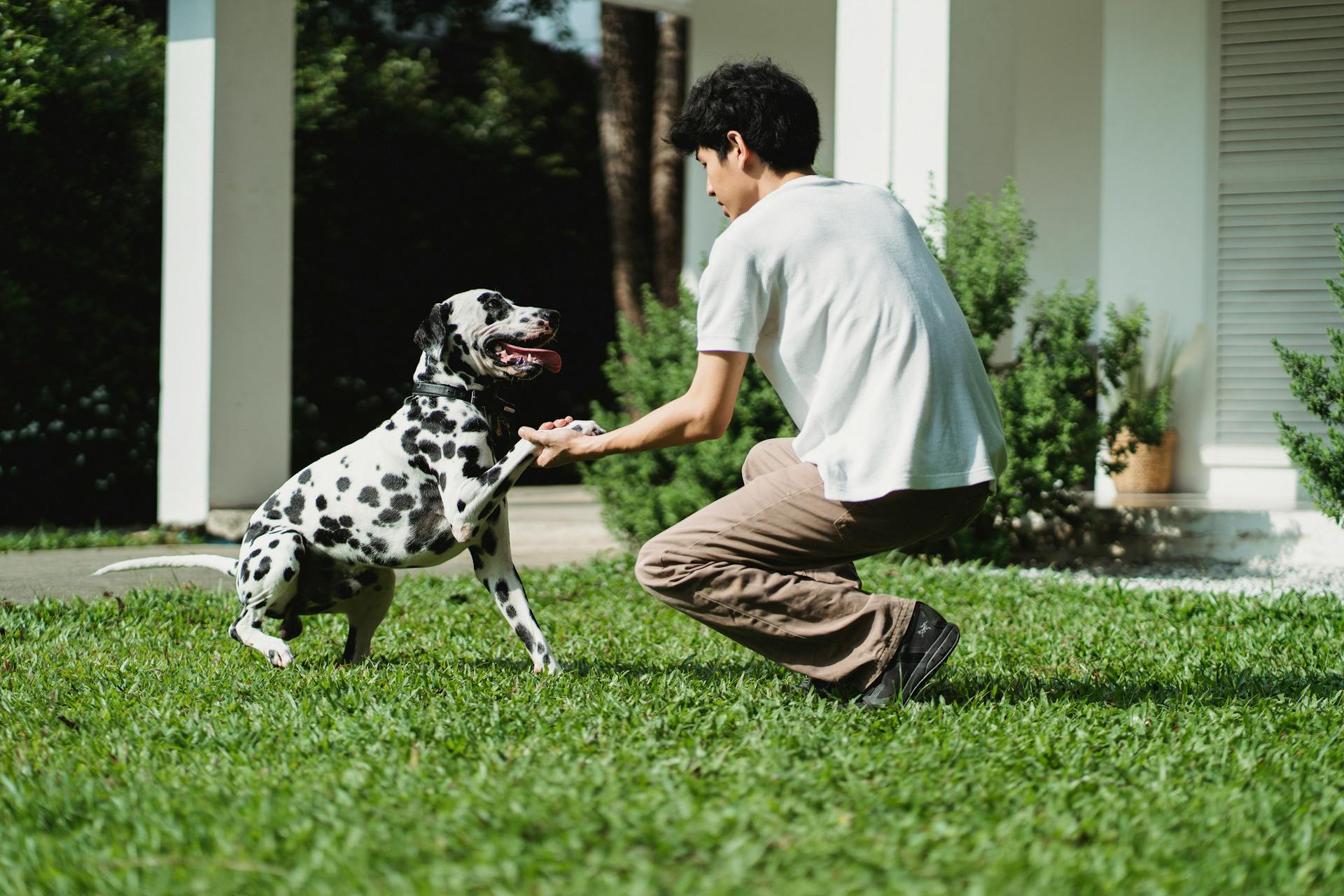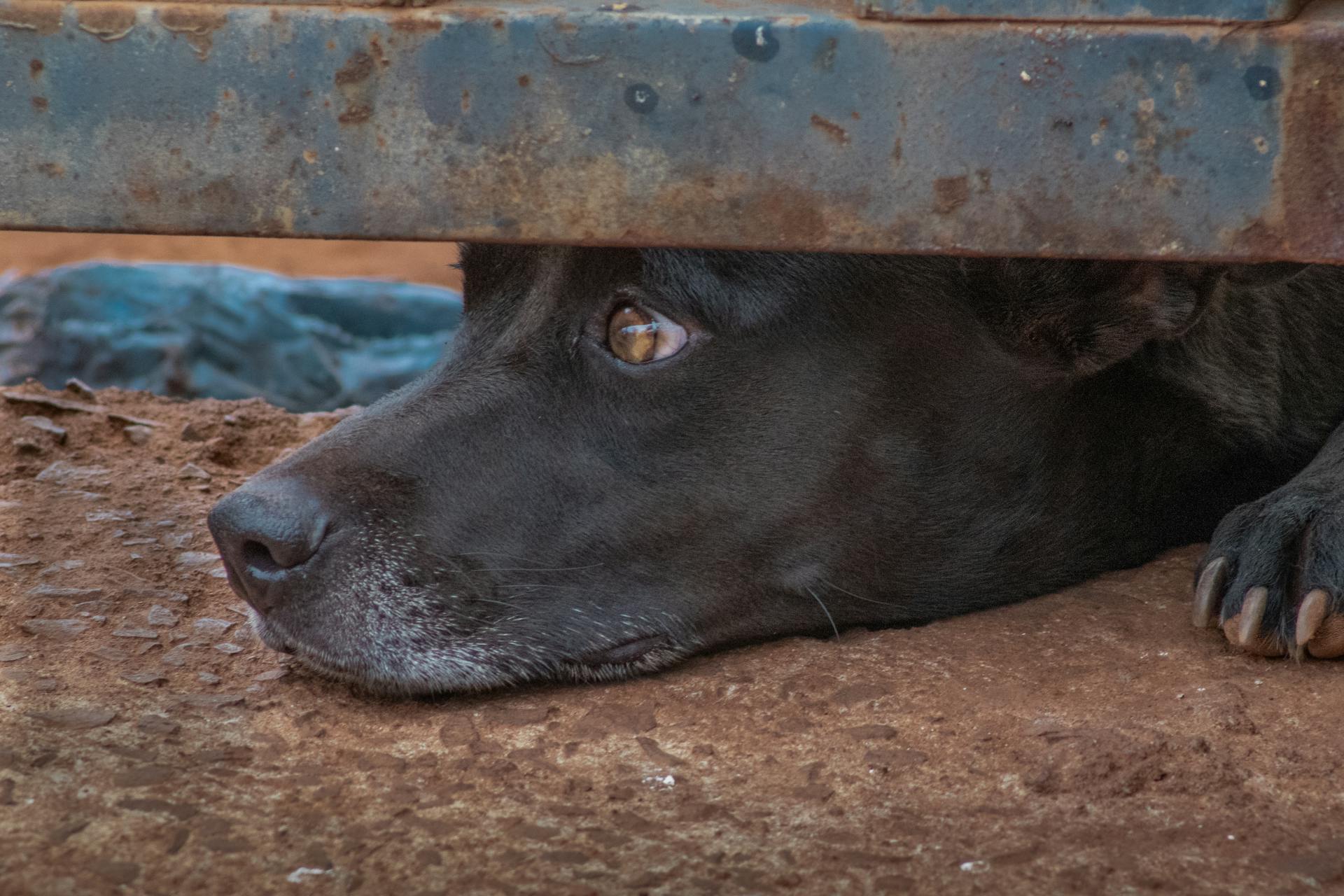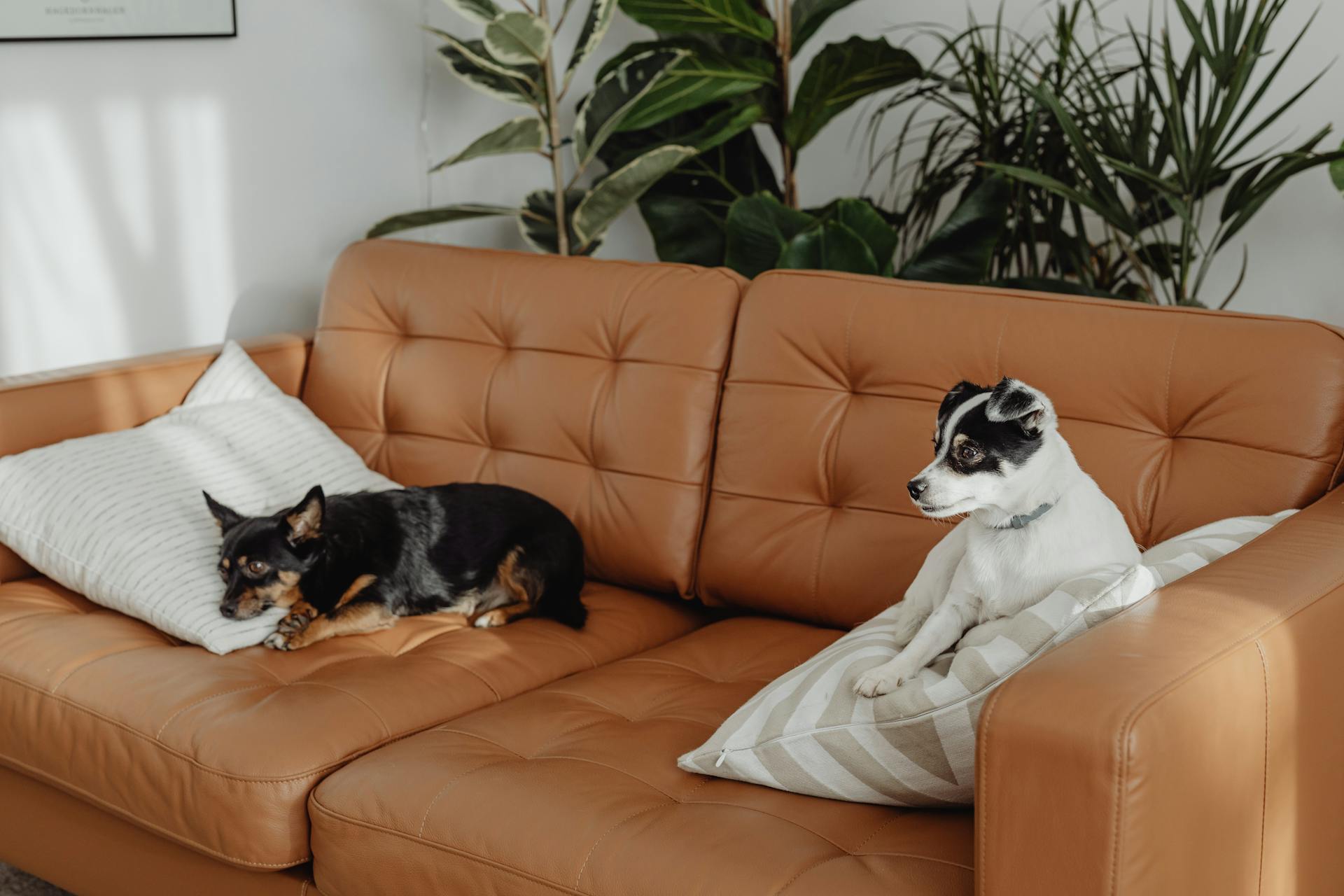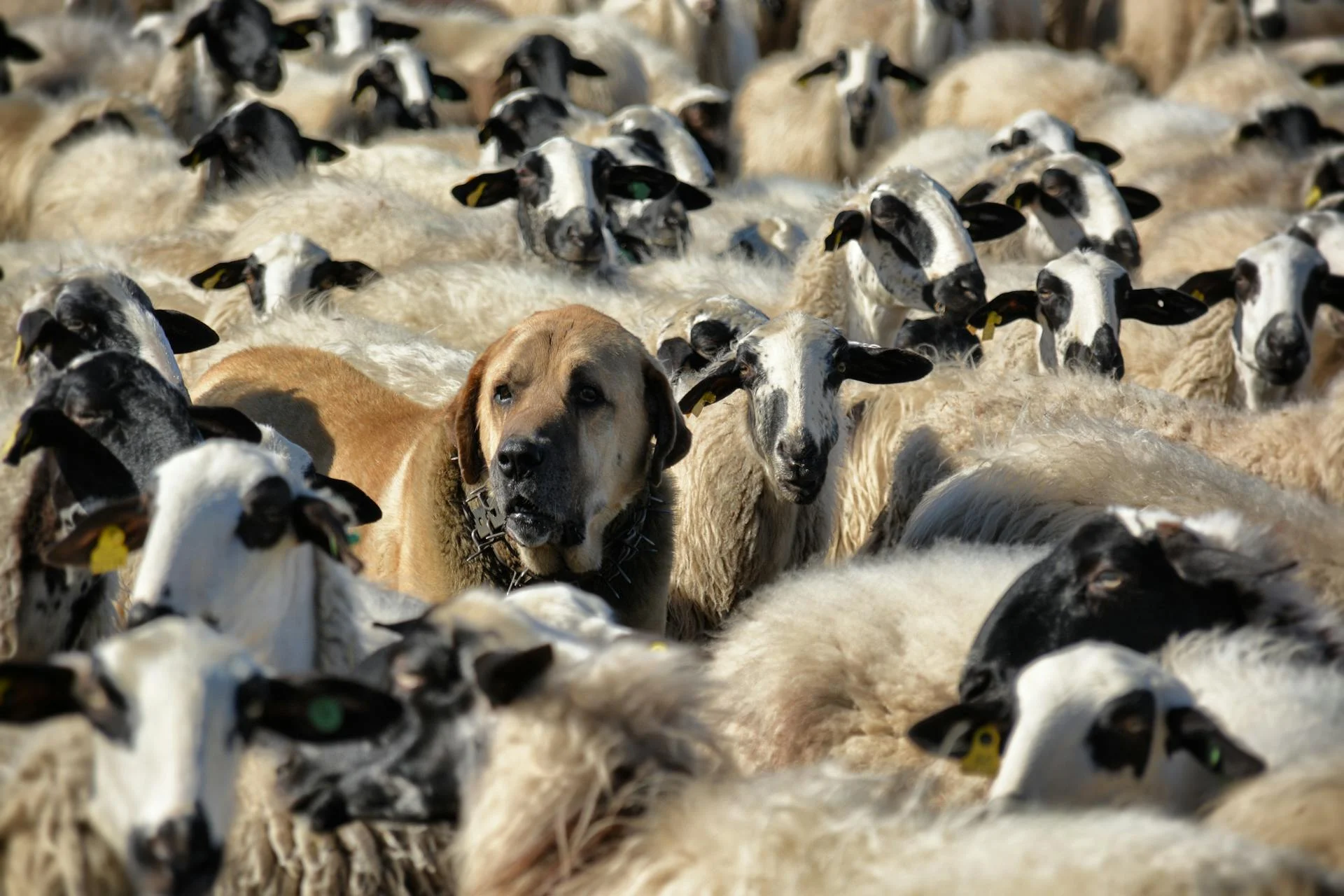
Dogs can learn to behave through positive reinforcement training, which focuses on rewarding good behavior rather than punishing bad behavior.
A common issue many dog owners face is barking, which can be caused by boredom, anxiety, or excitement. According to a study, dogs that receive adequate exercise and mental stimulation are less likely to bark excessively.
Consistency is key when training a dog, as they thrive on routine and clear communication. A study found that dogs that received consistent training from their owners showed significant improvement in their behavior.
By understanding the underlying causes of your dog's behavior, you can develop a tailored training plan to address specific issues, such as jumping up or pulling on the leash.
Understanding Dog Behavior
Dogs bark incessantly due to anxiety, boredom, or a desire for attention. This behavior can be a challenge to address, but recognizing the underlying cause is essential.
Some common problem behaviors in dogs include constant barking, chewing, and digging. Chewing is particularly common in puppies, but it should decrease as they age.
Dogs may engage in undesirable behaviors like door-darting, jumping on people, and destructive chewing. These behaviors can be prevented or reduced with proper training and reinforcement.
Here are some common signs of problem behaviors in dogs:
- Constant barking
- Chewing
- Digging
Positive reinforcement training can help teach your dog cues and reinforce good behavior. By rewarding your dog for desired actions, you can encourage them to repeat those behaviors.
For example, you can teach your dog to sit before letting them outside, before petting them, or before feeding them. This can help prevent problem behaviors like door-darting and jumping on people.
Related reading: Does Neutering Help Dog Aggression
Training and Correction Techniques
Teaching your dog what to do instead of the unwanted behavior is a crucial step in correcting their behavior. This involves identifying an achievable goal, such as instead of jumping up, your dog learns to greet people calmly with all four paws on the ground.
To encourage your dog into a "sit" or "down" position, start by using positive reinforcement techniques like holding a toy or treat and slowly moving your hand over and slightly behind your dog's head. This will help them learn to sit and then down.
Discover more: Dog Training Sit
Dogs don't understand sentences, so keep verbal cues short and uncomplicated. The most commonly used verbal cues include "watch", "sit", "stay", "down", "off", "up", "come", "heel", "leave it", and "drop or give."
A positive interrupter can be a valuable tool in stopping unwanted behaviors. This can be a noise or word that means "disengage from whatever you are doing and pay attention to me!" It's essential to teach this interrupter consistently and practice it in various situations.
Here are some common verbal cues and their meanings:
- Watch (eyes on me)
- Sit
- Stay
- Down (lie down)
- Off (get off me, someone else, the furniture)
- Up (stand up)
- Come (to me)
- Heel (walk close to my side)
- Leave it (don't touch or pick up something from the ground)
- Drop or give (when trading something in their mouth for a treat or toy)
Remember, stopping unwanted behaviors doesn't always follow a linear path. You may need to reevaluate and rework your training plans until you find the right formula for you and your dog.
Positive Reinforcement and Rewards
Positive reinforcement training is a powerful tool for correcting dog behavior. Using the right rewards can make all the difference in getting your dog to listen and learn.
To get started, you'll need to find the right treats. They should be enticing and irresistible to your pet, so experiment with different options to see what works best. A small, soft piece of food is ideal, as it's easy to eat quickly and look to you for more.
It's also essential to vary the treats you use, so your dog doesn't get bored with the same old thing every time. Keep a stash of different treats on hand to keep things interesting. And don't forget to pair each treat with a verbal reward, like praise or a simple "yes" or "good dog" in an enthusiastic tone.
Here are some tips for choosing the right treats:
- A treat should be a small, soft piece of food.
- It should be enticing and irresistible to your pet.
- Keep a variety of treats handy to avoid boredom.
- Use a verbal reward, like praise, every time you give a treat.
As your dog learns new behaviors, you'll want to reward them every time they demonstrate that behavior. This is called continuous reinforcement. But once they've got it down, you can switch to intermittent reinforcement to keep things interesting.
Here's a rough guide to switching from continuous to intermittent reinforcement:
- Start by rewarding your dog with a treat four out of every five times they do the behavior.
- Gradually decrease the frequency of rewards, but don't go too fast or your dog might get frustrated.
- Continue to praise your dog every time, even if the treats become less frequent.
Managing Problem Behaviors
Managing problem behaviors in dogs requires a thoughtful approach. Constant barking is often a sign that a dog is anxious, bored, or seeking attention.
To address this issue, it's essential to identify the underlying cause and develop a plan to address it. Chewing, for instance, is common among puppies but should decrease as they age.
Some common problem behaviors include constant barking, chewing, and digging. These behaviors can be managed by providing adequate exercise, mental stimulation, and training.
Here are some tips to help you manage problem behaviors:
- Provide regular exercise and mental stimulation to prevent boredom and anxiety.
- Train your dog to respond to basic commands and engage in fun activities.
- Redirect undesirable behaviors, such as chewing, to acceptable alternatives.
By following these tips and being patient, you can help your dog overcome problem behaviors and develop good habits.
Why Do I Have Problems?
If your pet is exhibiting problem behaviors, it's essential to understand the possible reasons behind them. Natural instincts can be a significant contributor, especially in certain breeds that are prone to behaviors like digging, chewing, and chasing.
Some dog breeds are more likely to have behavior problems due to their natural instincts. For example, dogs bred for hunting or herding may have a strong prey drive or a tendency to herd people.
Health problems can also cause sudden changes in behavior. If your pet starts exhibiting strange or bad behaviors out of nowhere, it's crucial to consult your veterinarian to rule out any underlying health issues.
A lack of training can prevent dogs from maturing out of bad behaviors. Dogs that don't receive proper training may continue to exhibit problem behaviors as they age.
Here are some possible reasons why your pet may be exhibiting problem behaviors:
- Natural instincts
- Health problems
- Lack of training
Other Problem Behaviors
Dogs can develop a range of problem behaviors that can be challenging to manage. Constant barking is a common issue, often caused by anxiety, boredom, or a desire for attention. Some dogs may bark incessantly due to these underlying reasons.
Chewing is another common problem behavior, particularly among puppies. However, it's natural for this behavior to decrease as your dog ages. If your dog is still chewing excessively, it may be a sign of boredom or anxiety.
Dogs may also exhibit digging behavior, which can be damaging to your carpet or furniture. Some breeds have a natural instinct for digging, making this behavior more common in certain types of dogs.
- Constant barking
- Chewing
- Digging
These problem behaviors can be stressful for both you and your dog, but understanding their causes can help you address them effectively.
Protect Your
Resource guarding is a common canine behavior where a dog becomes possessive over something valuable. It's essential to address this behavior as soon as possible to prevent it from escalating into aggression.
Dogs don't have to be friends with every person or dog they meet. In fact, it's healthy for them to have their own space and boundaries. For example, in Italy, dogs are often kept away from other dogs, and people don't constantly try to pet them.
Here are some signs of resource guarding:
- Growling
- Barking
- Lunging
If you notice any of these signs, it's crucial to intervene and protect your dog's space. This can be as simple as calmly telling a stranger to give your dog some space, or avoiding situations that might trigger resource guarding behavior.
Canine Aggression
Living with an aggressive dog can be stressful and even dangerous for both humans and animals. Aggressive behavior can be detected by looking for signs such as growling or snarling, stiff posture, snapping or nipping, and lunging.
Aggression can be directed at specific groups, like children or other animals, or towards anyone. There are many possible reasons behind aggression, from fear to possessiveness. If left unaddressed, aggression can escalate and result in injuries.
Reactive dogs can become aggressive if not trained properly, so it's essential to address reactivity early on. A reactive dog may lunge, bark, and growl in response to common stimuli, becoming difficult to control.
Here are the signs of aggression:
- Growling or snarling
- Stiff posture
- Snapping or nipping
- Lunging
Reactivity can turn into aggression, so it's crucial to take it seriously. A reactive dog is usually a fearful dog, and causes can include genetic factors, lack of socialization, prior bad experiences, or lack of training.
Training and Support
Finding the right trainer is crucial for successful dog behavior correction. Visit the Association of Professional Dog Trainers to search for a trainer in your area.
A trainer who uses positive reinforcement methods is a great place to start. This approach focuses on rewarding good behavior rather than punishing bad behavior.
There's currently no national credentialing for dog trainers, so be sure to ask about their methods and techniques. You want to be comfortable with the approach they're taking.
Certification from a reputable organization, such as the Association of Professional Dog Trainers, is a good indication that a trainer is committed to positive reinforcement.
Suggestion: The Power of Positive Dog Training
Sources
- https://www.whole-dog-journal.com/training/five-steps-to-stopping-unwanted-behavior/
- https://www.humanesociety.org/resources/positive-reinforcement-training
- https://thedogwizard.com/problems/
- https://www.thesprucepets.com/common-dog-behavior-problems-1118278
- https://www.vet.cornell.edu/departments-centers-and-institutes/riney-canine-health-center/canine-health-information/managing-reactive-behavior
Featured Images: pexels.com


